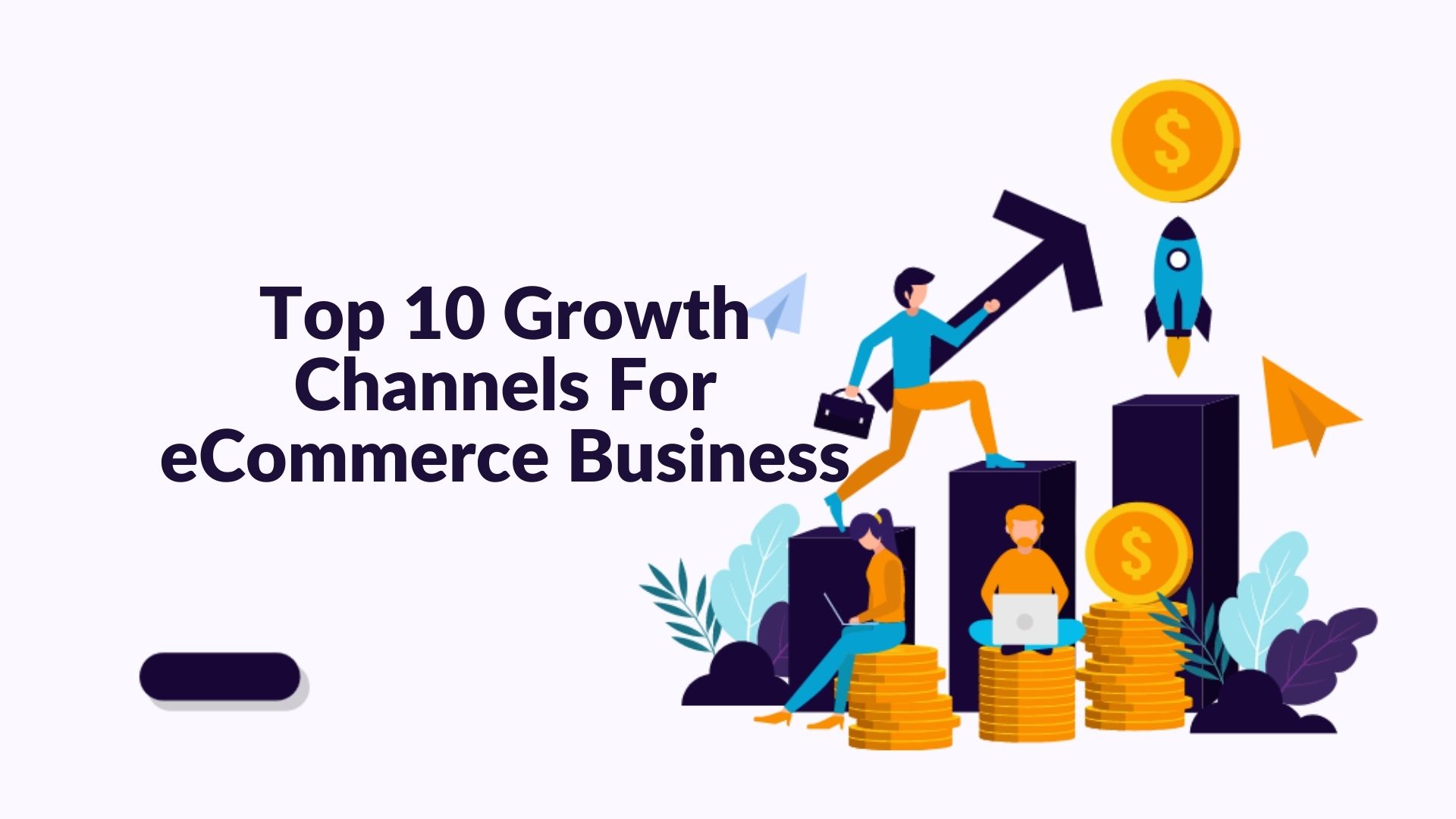E-commerce is a model that lets people buy and sell things over the internet. However, It is easy to describe then operate and grow an eCommerce platform. Every business requires audiences to advertise their products and generate sales from them. Therefore, not all platforms are suitable for every business.
In this article, we discussed the top ten growth channels for eCommerce. Additionally, we included some tips on creating sustainable growth from these channels.
Let’s dive in.
Top 10 Growth Channels for E-commerce
Business growth means generating more profit along with fulfilling customer expectations to ensure their repetition. There are several engaging platforms where we can promote and increase brand awareness. Every platform varies according to your business niches and target audiences.
Selecting random platforms for product and service promotion makes your marketing effort meaningless. Let’s take a glance at top growth channels and their flexibility for eCommerce.
Facebook is a popular platform for B2C eCommerce businesses. It has many potential benefits and measurements that help for business growth. Around 56% of users are male, and 44% are female on Facebook.
You can publicize business identity, products, services, and other essential details through this social platform. Moreover, you can track your service’s insights and customer satisfaction rate through this. Proper use of Facebook marketplace, paid ads, and other activities open the opportunity to generate qualified leads.
Instagram is a platform where people can connect with various kinds of businesses, influencers and follow trends. It opens an interactive way to promote brands, products, and services through creativity.
Instagram is the best place to promote food, fashion, travel, fitness, art niche-based eCommerce. Many people don’t like reading but love to see beautiful photos. Instagram helps to target those audiences through business promotion. Also, it lets you observe business performance with qualified insight.
Linkedin is a platform for professionals. It helps you connect and prospect for quality sales leads. You can also increase your public value globally as a reputable and trusted organization. Linkedin is best for eCommerce businesses that offer b2b products or services.
Create a LinkedIn page so that users feel comfortable sharing details reliably about your business. This platform is perfect for b2b businesses. Other advantages of using LinkedIn for a corporate business include using it as an effective tool for creating new business and developing referrals.
Twitter is a micro-blogging social media platform that lets a business holder promote their brand, products, and services. Its real-time conversation flexibility lets you track trends, events, and other fundamental measures.
Twitter is the best place for launching marketing programs targeting the United States. As we know, it’s a real-time networking platform; all things about your brand and customers are open. Being professional and loyal about products and services will leverage brand value in this platform.
Pinterest is another photo-sharing platform like Instagram with a different vision. It’s a place where people share new ideas, designs, thoughts, and many more. However, if you maintain a food, fashion, or travel-based business, it’s an efficient platform to generate leads.
No other social platform lets you convert leads so easily as Pinterest. This ridiculously high-engaging platform enables you to track what is trending right now. Pinterest is best for those businesses who use Images to represent their service quality.
Google creates a huge advantage for local and international businesses. Google says 46% of local search queries had local intent. And it opens a huge marketing channel to drive potential visitors, including organic and paid searches, advertisements, etc. Performing local SEO for google pulls your business in front of the local people.
Set effective marketing strategy and optimize websites to rank on search result pages. However, you have to find out what people are searching on google about your niche and service.
Bing
Bing is a less competitive and 2nd largest search engine to grow businesses initially. It contains different aged searchers, where you can track and promote services individually.
Diverse and low-cost Ad campaigns allow you to drive traffic to your site easily. Bing ads have more emerging power on SEO than google, which offers high conversion rates. If you’ve started a new eCommerce business, bing will be a great growth channel for your eCommerce site.
Email has the biggest ROI of any form of marketing at about $42 for every $1 spent. Using emails as part of your marketing process gets people in places they normally miss – your inbox. It’s a sustainable and manually operational channel that offers individual interaction with your consumers.
Collecting emails and differencing those according to user appearance or intent lets you target them personally and efficiently. For example, most US-based audiences enjoy receiving emails from businesses where they purchase products and services regularly.
Affiliate Marketing
The biggest challenge for eCommerce is generating traffic and seals. Affiliate marketing encloses a new way to increase brand authority within budget planning. It’s like, let’s people talk and recommend your products and services with their audience. In return, pay them based on each successful sale.
Popular eCommerce sites use this opportunity to increase visitors and sales as much as they can. For example, Amazon’s affiliate program helps them to reduce marketing costs and efforts for individual product and service segments.
Best use of channels for sustainable growth
Each growth channel has its unique strengths and opportunities. If you want to be benefited from your eCommerce site, it’s best to use multiple channels. Here are some tips to help you allocate sustainable growth,
- Post ideas or thoughts related to your products and services on social media platforms. Launch ad campaigns to get closer to the audience with your best solutions or popular products.
- Rank your eCommerce site on SERPs of google or bing to get direct visitors for specific product segments. Take the advantages of SERPs results like organic, PPC, SEO, etc.
- Run engaging email campaigns, and affiliate programs if you want to reach customers more specifically. Define your email lists according to users’ nature and position to build better relationships with them.
- Choose social media platforms according to your targeted audiences, product, or service categories. Because if there is no one interested in your service on a platform, it makes no sense to put marketing efforts there.
Final Thought
Increasing potential lead generation requires overall management and observation. No one will come and visit your eCommerce site and buy from it if you don’t let them know about this. Build marketing programs that consumers can relate to their demands and needs. Lastly, people will never be your customer if they don’t trust you. If they find your service satisfactory, they will come back. It doesn’t matter what or where you are.





